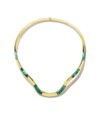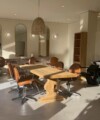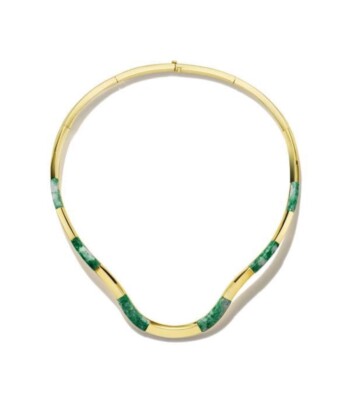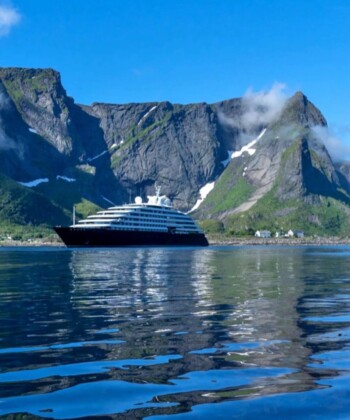If you’re a skier or snowboarder who’s mostly been keeping to the Alps or the Rockies for your weekends in the mountains, consider switching things up on your next trip with a more exotic locale: Niseko. Quite simply put—it is powder paradise as one of the snowiest ski areas in the world. And while local and regional ski bums have long been enjoying Niseko’s 2,191 acres of shreddable terrain, the rest of the world is only recently starting to take notice. In fact, in December 2015 and January 2016, the number of travelers from the U.S. to Niseko rose 64% over the entire previous ski season. And expectations are those numbers will continue to go up. So now is the time to put Niseko on the top of you winter-weather wishlist. Here’s our guide on how to do it right over a long weekend.
Friday evening:
The journey from the US to Niseko is long and combines at least two flights (one of which will take more than half a day if you’re flying from the East Coast) with a two-and-a-half-hour car ride from Sapporo’s airport. To ensure you have all the comforts of home when you’re finally there, book one of Kasara’s stylish townhouses. These ski-in, ski-out units can be personalized with all your favorite amenities prior to arrival. The concierge team can stock the fridge with your preferred drinks and even have dinner waiting as soon as you walk in. Consider your travel-weary body, take a relaxing bath in the stunning standalone wood tub in the master bedroom.

Kasara
Saturday morning:
For advanced skiers and snowboarders, one of the perks to staying at Kasara is the early-morning, 8 a.m. fresh track guided tour of the mountain (weather permitting, of course). You’ll be among the very first to take on all that fresh angel dust. From the top are Instagram-worthy views of Mount Yōtei, which looks a lot like the more famous Mount Fuji. If you’re not quite at that level, sign up for an instructor, who can meet you at your doorsteps and ski or board with you until you’ve had enough. But definitely break for lunch at the strikingly designed Lookout Cafe, which features lattice-patterned timber partitions and columns. The menu is typical Japanese comfort food: seafood ramen and fortifying portions of crisped-on-the-outside pork katsu with gravy and rice.

Kasara
Saturday afternoon:
Down at the base, The Green Leaf Niseko Village is home to one of the most beautiful onsens in the area. An onsen is a Japanese hot spring, where bathers soak in the nude (women and men use separate onsens). As a guest at Kasara, you get free access to the Green Leef’s indoor-outdoor natural rock pools. The outdoor onsen is specially atmospheric, surrounded by large boulders and trees covered in a layer of snow. Stay a while and let the mineral-rich water loosen your ski-achy muscles. Afterward, stroll around Niseko Village and pop into I Zone Ikeuchi, a boutique that stocks a combination of chic skiwear (in case you forgot something) and everyday clothing, accessories, and skincare products, most of which are Japanese-made. Our favorites: handsome leather satchels by Somès, sweet smelling all-natural lip balm from Naluq, and high-tech Alk Phenix coats for chill-protection. Then, grab a sweet snack at Milk Kobo just outside the village. The retail outlet of a long-standing dairy farm, Milk Kobo serves indulgent (and surprisingly light) cream puffs and homemade ice cream—nutty black sesame is a winner.

Niseko Village
Saturday evening:
The Niseko region is full of fantastic kitchens and one of the most renowned is Kamimura in the town of Hirafu. Here, chef Yuichi Kamimura brings together the best seasonal ingredients from Hokkaido to create his ever-changing tasting menus. Previous highlights include menuke fish paired with brown-rice risotto and a duck and veal consommé spiked with drops of Japanese whisky. If you still have the energy, popped into teeny-tiny Fridge Door Bar for a nightcap. This Hirafu watering hole is popular for it potent cocktails and massive selection of records on vinyl.

Niseko Village
Sunday morning:
Take couple of hours to shred down other parts of the mountain. Niseko-Annupuri is comprised of four different but connected ski areas, and the all-access lift passes allow for seamless transitions from one to the other. If conditions are favorable, and you can handle it, there are more challenging (and exciting) back-country runs to conquer. But a couple of hours will do; today, you’ll want to drive to Otaru, one of Japan’s famous foodie destinations, where sushi is incredible. A lot of the fishermen here catch seafood for some of Tokyo’s top restaurants. But there’s still plenty to left for locals—and visitors.
Sunday afternoon:
Lunch is at Tatsumi Sushi, a casual, unassuming eatery, where you can take a private room with typical low-lying seats. The chef, who’s been in the business for roughly four decades, will come and prepare your nigiri platter tableside. Then, explore a bit of Otaru, popping into shops for souvenirs and bakeries for dessert. Niikuraya is a family-owned business that’s been serving traditional Japanese sweets for over 120 years. Try the mochi (rice cake) slathered with green tea paste; they are addictive. On the drive back to Niseko, visit one of the world’s premier whisky distilleries: Nikka, whose founder Taketsuru Masataka is largely considered the father of Japanese whisky. A tour of the Yoichi facilities means you not only get to see how every award-winning bottle is created but you can also taste a few pours in the handsome on-property bar manned by an elegant bartender.
Saturday evening:
It’s been a long day so for dinner, take advantage of yet another fantastic Kasara amenity: The concierge staff can hook you up with a private, at-home feast by a Niseko toque. There’s the soba option, where a master from UgaSoba can demonstrate how these noodles are made from scratch (you get to participate, too!) before a shabu-shabu dinner is prepared. Similarly, the head chef from Yang Shu Ten can whip up a 10-course tasting menu of some of the restaurant’s best-selling dishes featuring Hokkaido-sourced ingredients. Think: Wagyu steak, seaweed with sesame sauce, and soup with kinki fish, a deep-water species that’s not only seasonal but quite rare.






































